Panama is a country located in the southeastern corner of Central America, bordering Colombia to the south and Costa Rica to the north. It is known for its geostrategic and economic role thanks to the Panama Canal, which connects the Atlantic Ocean with the Pacific Ocean. Its capital is Panama City, and like many other large Latin American cities, it presents strong contrasts between the areas of high purchasing power and the suburbs.
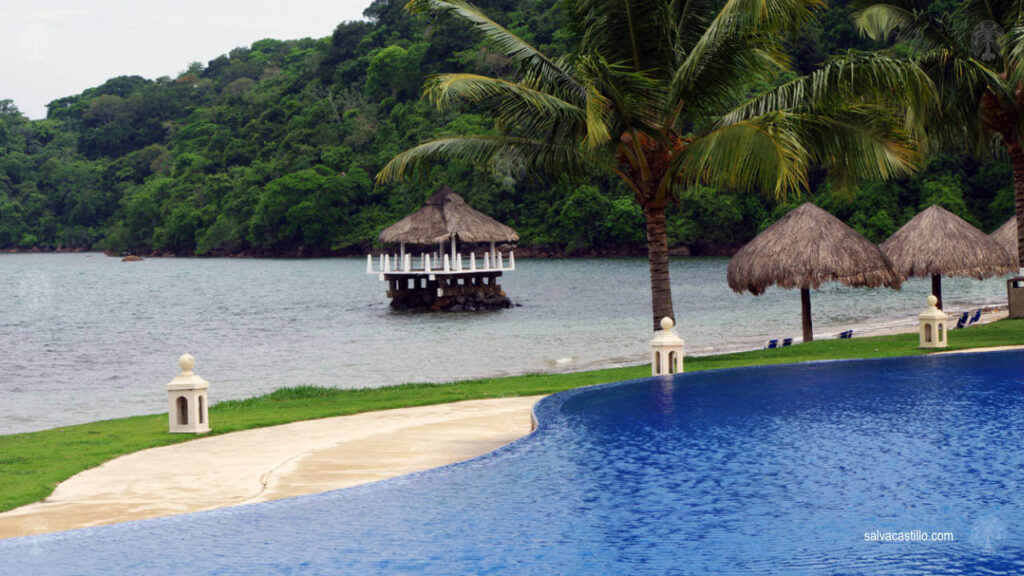
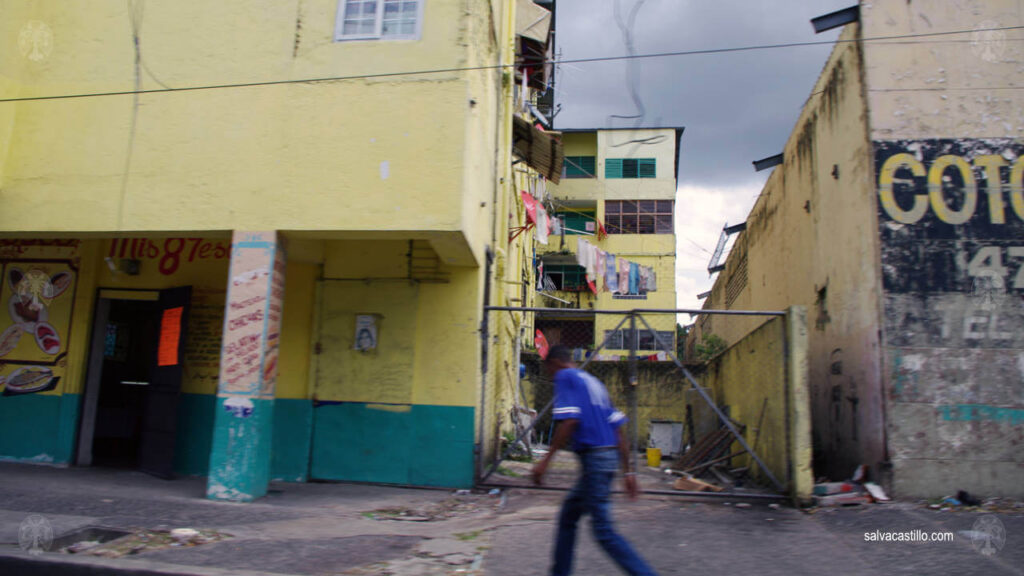
I had the tremendous fortune to be invited to spend a few days in Panama and enjoyed a wonderful company, whom I will never be able to thank as she really deserved. The accommodations I stayed in were of the highest standard at all times, in idyllic locations, with private beach, tikibars and an infinity pool. However, the inland trips we took highlighted the contrasts with the lifestyle of the local majority. As we motorcycled through the country’s interior roads, I also got a sense – if only by seeing the infrastructure – of how life is lived in the provinces.
Navigating the Panama Canal
The Panama Canal is one of the most important infrastructures in the world, since it connects the Atlantic Ocean with the Pacific Ocean, allowing the rapid transit of ships without the need to go around the southern tip of South America, through the Strait of Magellan or Cape Horn. Together with the Suez Canal, it is an essential waterway for international trade.
Part of the territory of what is now Panama encompasses an elongated and narrow isthmus and, after the arrival of the Spanish in the 16th century, the Spanish Crown also recognized the strategic importance of the Isthmus of Panama. The explorer Vasco Núñez de Balboa was the first to cross the isthmus in 1513, discovering the Pacific Ocean for Europeans.

A first canal project – a French project – began construction in 1881, but was halted in 1889 due to major difficulties – among them the rugged topography, tropical climate, and outbreaks of malaria and yellow fever, which decimated the workers. More than 20,000 people died during the work. In 1904, after Panama gained independence from Colombia, the United States took over the project and finally inaugurated it in 1914.


The Panama Canal is crucial for world trade, as more than 14,000 vessels transit through it each year, representing about 6% of world maritime trade.


Panama derives significant revenue from tolls charged to vessels for use of the canal, which contributes significantly to the country’s economy. Canal fees vary according to the size and type of vessel, and can reach hundreds of thousands of dollars per boat.
Located in the canal you can see – and admire – the La Titan crane, one of the largest floating cranes in the world today, at 112 meters and 5000 tons. A total of 4 were built by Nazi Germany during World War II, to serve the German Navy. After the end of the war, the Allies divided the three remaining operational ones, being this one in particular -originally named Schiwmmkran No.1, Bertha Krán or Kran 10-, for the United States. There she operated in the port of Long Beach in California, being renamed Herman the German.
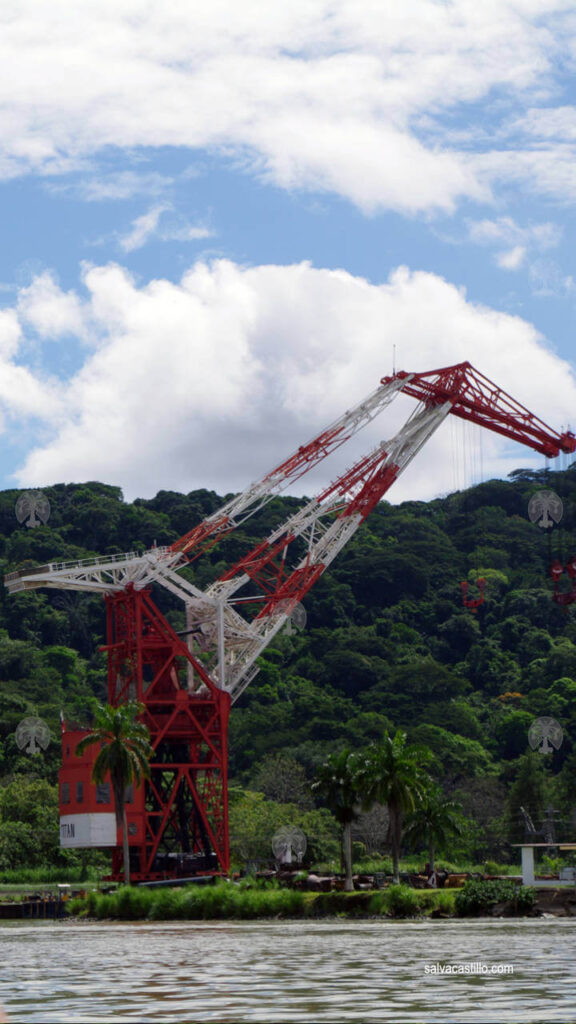
Finally the American government donated it to the Panama Canal in 1999. There it is used to lift boats and trailers, and also to do maintenance work on the canal’s lock gates (such as when they need to be lifted).
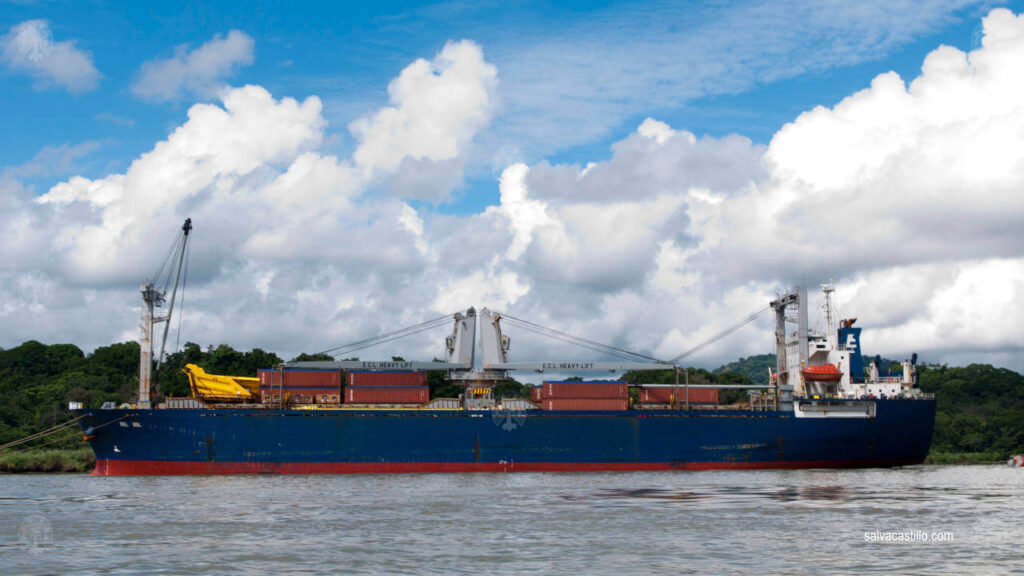
There is a steady cadence of ships navigating the channel, with queues of ships clustering at the channel entrances on both oceans. The ships do not travel at a high speed, but rather travel at between 8 and 10 knots – 15 to 18 km/h (9 to 11 mph). The Panama Canal is approximately 80 km long.
Miraflores Locks
The Miraflores Locks are one of the three lock systems that are part of the Panama Canal. Located near Panama City, at the end of the canal that connects to the Pacific Ocean.

The Miraflores Locks raise the ships about 16.5 meters in two stages, from the level of the Pacific Ocean to the level of Lake Miraflores. This allows ships to continue their journey to Gatun Lake and then to the Atlantic.

The locks have two chambers, and each is 33.5 meters wide and 320 meters long, allowing for the transit of Panamax-sized ships (the standard dimensions for transiting the canal prior to the 2016 expansion).
Each time a ship enters a chamber, the gates close, and water is pumped into or drained out to raise or lower the ship as needed. The process is slow but efficient, with the chambers filling or emptying within minutes.
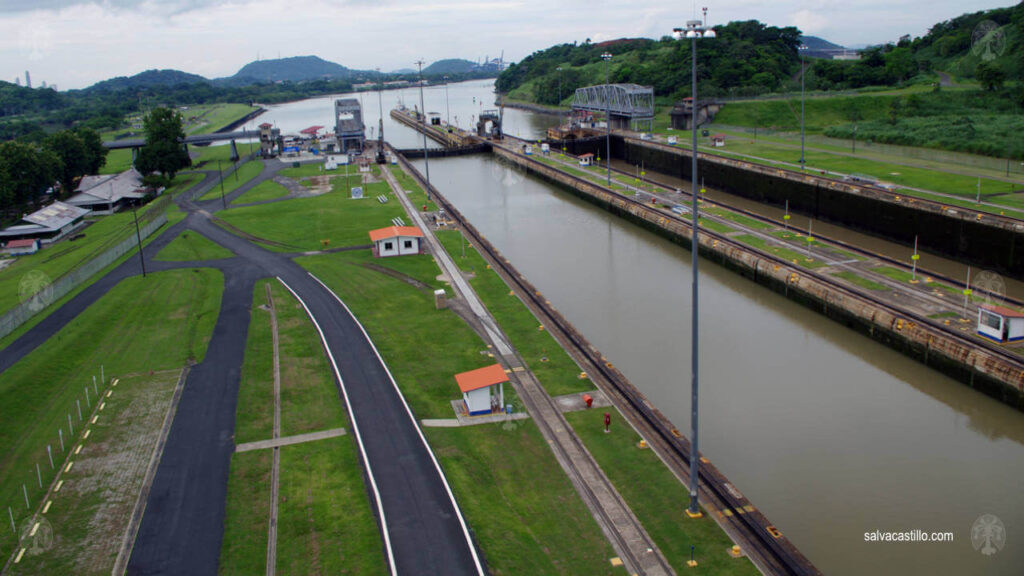
In the locks, the ships do not move under their own power, but are guided by locomotives known as “mules”, which move them slowly (at approximately 2 knots or 3.7 km/h) inside the lock chambers to ensure safe maneuvering.

The difference in elevation of the Pacific Ocean is greater than in the Atlantic due to the more extreme tides, which makes this lock system crucial to adjust the difference in elevation between the oceans and the system of artificial lakes that form part of the canal.
Panama City – Panama Viejo
Panama City, the capital of Panama, is the most important economic, political and cultural center of the country. It is located on the coast of the Pacific Ocean, near the southern entrance to the Panama Canal. With its mix of colonial history, modern skyscrapers and tropical biodiversity, it is one of the most dynamic cities in Central America.
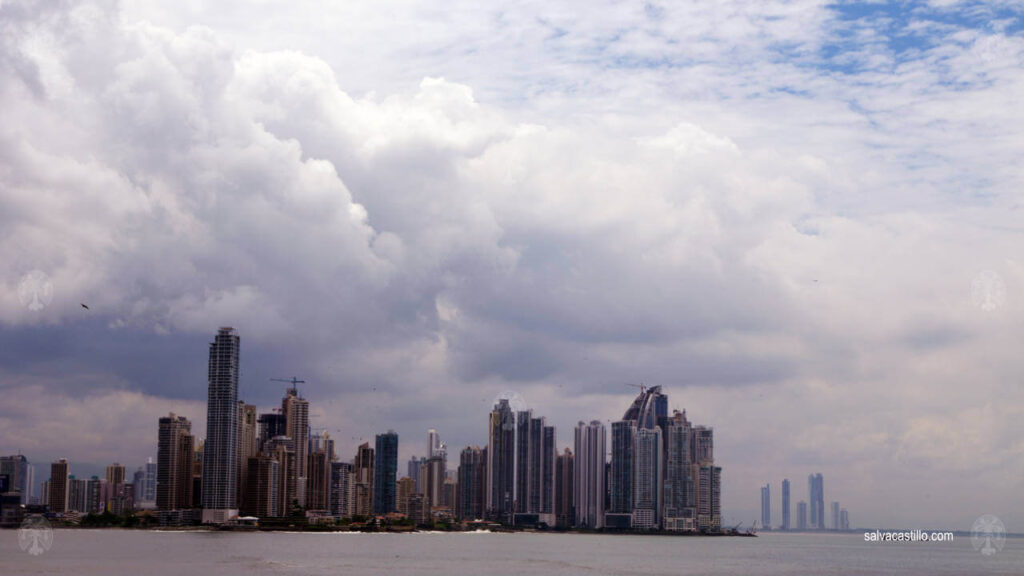
I had time to walk around the city because my plane was leaving well into the day. I decided to walk around the Panama Viejo which, besides being a very interesting historical site, offers unbeatable views of the skyline of Panama City.
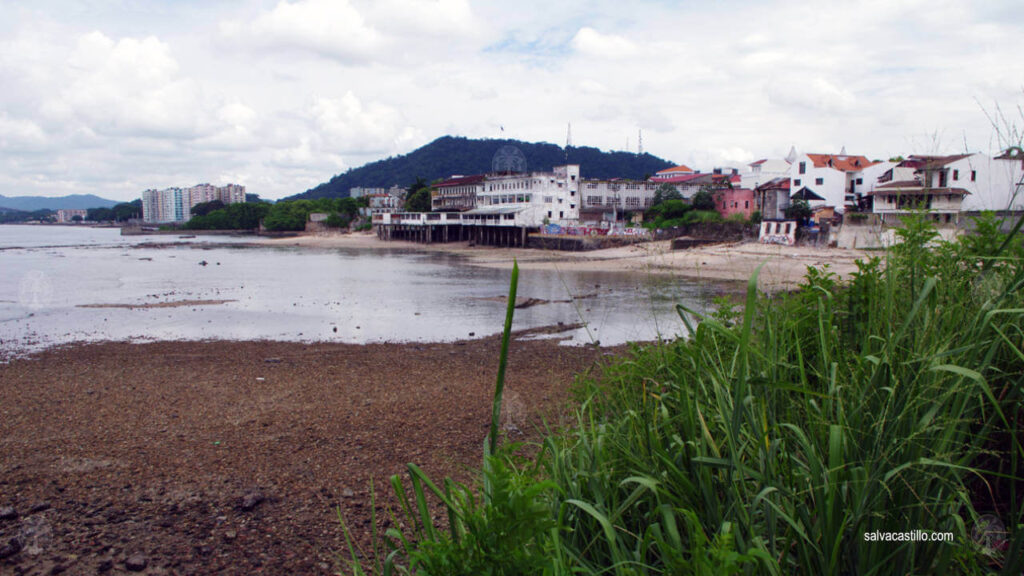

Panama Viejo is the ruins of the original city, which was attacked and sacked by the English pirate Henry Morgan in 1671.
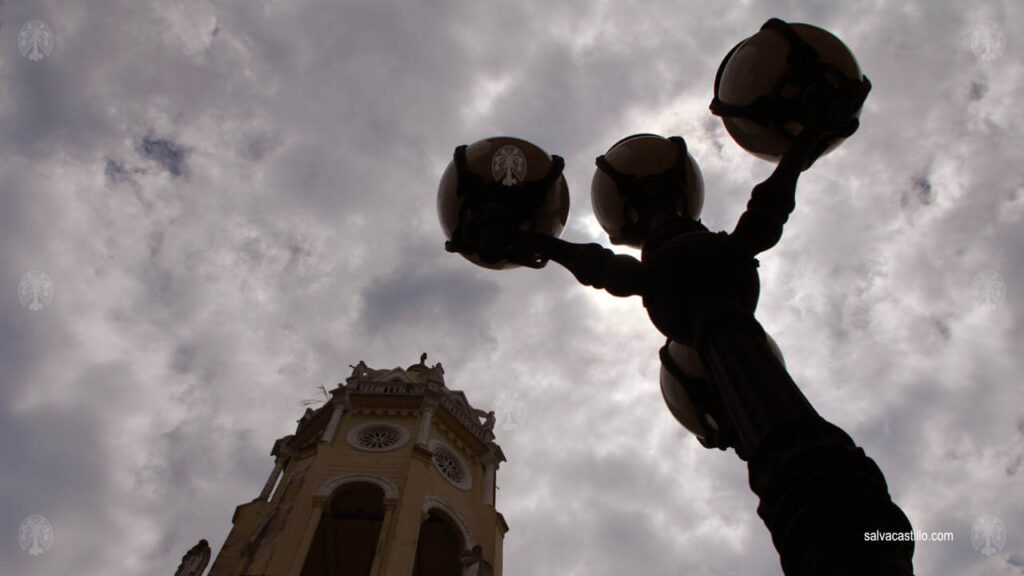

I walked for a while along the so-called Cinta Costera, and then I went into the streets of the district, walking through the area of El Boquete, Plaza de la Independencia, and the Church of San Francisco de Asis.


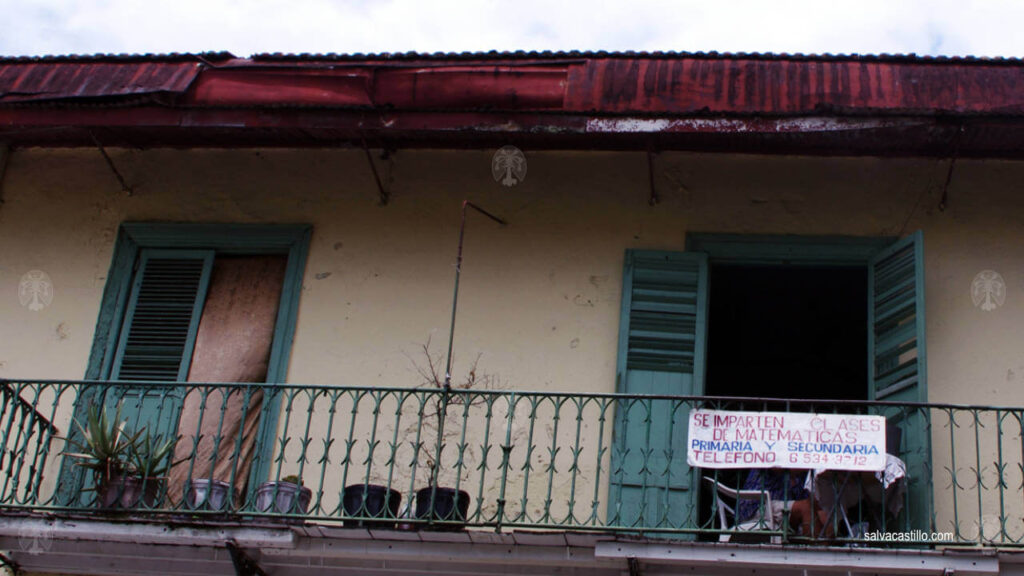
The Panama Viejo district was interesting to walk around and see the Spanish colonial architecture but its state of maintenance does not make it particularly photogenic. A good thing is that I walked around dragging my carry-on bag and did not feel unsafe at any time – and there are other places in the world where I have felt unsafe even in broad daylight. A picturesque place, no doubt.